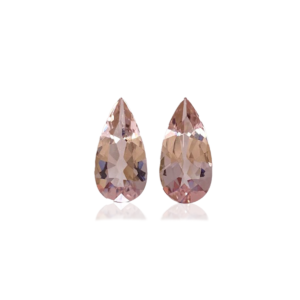
Preços apresentados são para exportação e não contemplam impostos e frete. Para aquisição no mercado nacional, impostos e frete serão acrescidos e apresentados no checkout antes da conclusão da compra.
Showing all 7 results







Name Origin: Named after the famous American mineral collector JP Morgan.
Main Colors: Light pink to dark pink, violet-pink, peach-pink, or salmon.
Producing Countries: Most Morganite on the market comes from pegmatite mines in Minas Gerais, Brazil, and Mozambique, Africa. Afghanistan, Namibia, and the US have been minor and inconsistent sources. Although currently only a small producer, the original Madagascar deposit still sets the standard for the best deep magenta-colored material. Mozambique has stood out in the last ten years, with large productions of material in the salmon pink color in the Marupino mine and purê pink in the Moiam mine.
Common Shapes: It is more common to cut them as ovals, rounds, cushions, and drops, as well as trillons, hearts, and briolet. Easy to cut stone, it can also be cut in larger calibrated sizes, pairs and sets of necklaces, earrings, and rings.
Usual Treatment: Some can be found without treatment. However, most are now treated with irradiation and then heat to improve the color, removing unwanted yellow and brown shades, and making them darker. Heating is done at relatively low temperatures (about 280 °C). Treatment is stable.
| Species: | pink variety of the beryl species. |
|---|---|
| Hardness of Mohs: | 7,5/8 |
| Specific Density: | 2,72 (±0.12) |
| Cleavage: | Indistinct |
| Fracture: | Conchoid, irregular, splintered |
| Crystal System: | Hexagonal, hexagonal prisms, columnar crystals |
| Chemical Composition: | Be₃Al₂(SiO₃)₆ Beryllium Aluminum Silicate |
| Transparency: | Transparent to opaque |
| Refractive Index: | 1,577-1,583 (±0,017) |
| Birefringence: | 0,005 a 0,009 |
| Dispersion: | 0,014 |
| Pleochroism: | Dichroism, weak to moderate, usually light red to purple-red. |
| Luster: | Vitreous |
| Fluorescence: | From inert to weak, pink, or light violet (UVL and UVC) |
Belo Horizonte – MG


